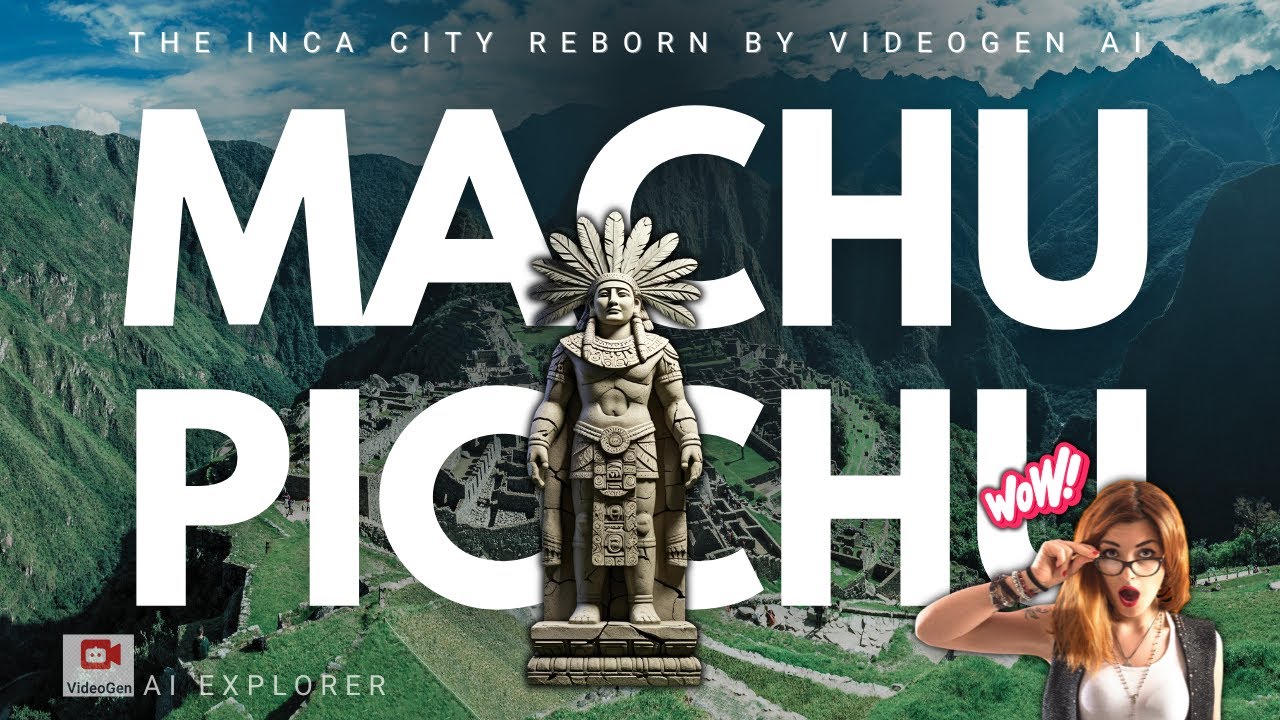
Introduction
High above the clouds in the Andes Mountains, hidden among the emerald peaks of Peru, lies a place lost in time—Machu Picchu, the sacred city of the Incas. A marvel of ancient engineering, spiritual significance, and enduring mystery, this city is not just ruins. It is a story frozen in stone, waiting to be retold.
Today, thanks to the revolutionary technology of VideoGen AI, Machu Picchu isn’t just something we visit through photos or documentaries. It’s something we can experience—reborn, reconstructed, and revived—through the power of AI-generated video storytelling.
Dawn Over the Andes: The City Revealed
As the first light of day pierces through swirling mists, Machu Picchu emerges slowly, like a memory surfacing from deep time. The stone terraces, carved with astonishing precision, seem to grow out of the mountain itself. Walls rise without mortar, fitting together so tightly that not even a blade of grass fits between the stones.
Thanks to VideoGen AI, these visual marvels are brought to life in vivid detail. The AI technology reconstructs atmospheric conditions, light reflections, and landscape topography to help us witness what sunrise might have looked like over the city 500 years ago.
Inca Architecture: A Harmony with Nature
The builders of Machu Picchu didn’t conquer nature—they worked with it. Their stonework wasn’t just functional—it was poetic. Using VideoGen AI’s 3D reconstruction and motion animation tools, we now see the techniques of the ancient Inca masons in action: laborers in crimson and gold guiding massive stones with wooden levers, carving each block with divine precision.
This isn’t just about walls and terraces. It’s about cultural vision—where architecture was aligned with the stars, shaped by faith, and constructed in tune with the mountain’s rhythm. The city was built to move with the Earth, not resist it.
The Temple of the Sun: Worship in Stone
Among Machu Picchu’s most sacred spaces is the Temple of the Sun. Its curved walls are perfectly aligned to capture the first rays of the winter solstice, bathing a sacred stone inside in golden light. This was no accident—it was an intentional astronomical alignment, a prayer cast in stone.
Close by, the Intihuatana Stone—often called the “Hitching Post of the Sun”—stands carved with geometric angles. It marked the changing seasons and tracked the solar year. Through VideoGen AI, we can now visualize how light interacted with these sacred structures, revealing functions long lost to time.
Vertical Agriculture: Life on the Mountain
Machu Picchu wasn’t just a ceremonial city; it was also a masterpiece of agricultural design. Its steep green terraces weren’t merely beautiful—they were practical. Each level created its own microclimate, allowing the Inca to grow corn, potatoes, and sacred coca leaves at high altitudes.
With VideoGen AI’s top-down reconstructions, you can now soar above the landscape and see how the Incas transformed impossible mountain slopes into a vertical farm system. Their knowledge of irrigation, soil layering, and sunlight optimization was centuries ahead of its time.
Machu Picchu Reborn with VideoGen AI
Here’s where technology meets storytelling. Using VideoGen AI, creators can reconstruct ancient cities in lifelike detail. Machu Picchu’s plazas, homes, fountains, and temples are digitally rebuilt to simulate the pulse of daily life.
Imagine a bustling city: women weaving bright textiles, children playing beside llamas, priests ascending narrow steps with ceremonial offerings. The AI-generated video doesn’t just show ruins—it breathes life into them. You feel the rhythm of life in a city once believed to be touched by the gods.
Secrets Beneath the Stones
Modern archaeology now uses AI-powered ground-penetrating radar to uncover what lies beneath Machu Picchu. Subsurface scans have revealed hidden chambers, corridors, and even what might be a royal tomb.
VideoGen AI integrates this data into animated storytelling. In one sequence, viewers descend a hidden spiral staircase discovered through lidar scans—moving from surface to underground temple, through glyph-marked walls, perhaps toward the final resting place of Inca royalty.
These digital reconstructions turn guesswork into immersive learning. They help us visualize what explorers, researchers, and locals have only imagined for centuries.
The Rediscovery of Machu Picchu
After centuries of being forgotten by the outside world, Machu Picchu was rediscovered in 1911 by Hiram Bingham, guided by local farmers and ancient maps. The city, hidden beneath jungle vines and moss, left the world stunned.
Today, we’ve moved beyond maps and photos. With VideoGen AI, the lost city is revealed like never before. High-resolution lidar scans peel back jungle layers. AI restores broken staircases, rebuilds fallen temples, and adds color and light where time had erased it.
You no longer just “see” Machu Picchu. You walk its streets, hear its chants, and feel the magic that once filled its corridors.
What Was Machu Picchu?
Was it a royal estate? A sacred pilgrimage site? A hidden fortress? Scholars still debate its purpose. The truth may lie somewhere in between. Machu Picchu was likely all these things: a multi-functional marvel, designed to reflect both heaven and Earth.
Through VideoGen AI, we are able to explore this mystery from multiple angles—astronomy, religion, agriculture, and defense. Each new digital layer adds context, helping us understand the genius of its creators.
A City Between Worlds
When night falls over Machu Picchu, AI-generated torches flicker along the stone paths. Above, the stars wheel silently over the Andes. Below, the city whispers forgotten prayers, songs, and hopes. Through the lens of VideoGen AI, we don’t just imagine the past—we step into it.
The technology doesn’t replace history. It enhances it. It allows us to listen to the stone, to hear what was lost, and to preserve it in a new, meaningful way.
VideoGen AI: Bridging Past and Present
VideoGen AI isn’t just a tool—it’s a storytelling revolution. From ancient cities to futuristic concepts, VideoGen AI enables creators to bring history to life. With advanced scene generation, accurate lighting simulation, and intelligent voice narration, this platform transforms ruins into revelations.
For educators, documentarians, and history enthusiasts, VideoGen AI offers a bridge between textbook facts and sensory experience. It turns static knowledge into cinematic journeys.
Conclusion: Machu Picchu Lives On
Machu Picchu is not a relic. It is a living narrative. Thanks to VideoGen AI, its story is no longer confined to stones and silence. It speaks again—in high definition, in emotion, in movement.
The footsteps of the Incas linger in the grass. Their dreams echo off the terraces. And now, with the help of artificial intelligence, we walk with them once more.


